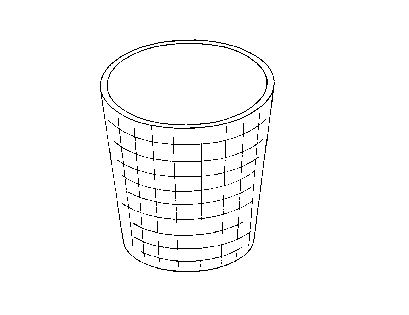Une partie des informations de ce site Web a été fournie par des sources externes. Le gouvernement du Canada n'assume aucune responsabilité concernant la précision, l'actualité ou la fiabilité des informations fournies par les sources externes. Les utilisateurs qui désirent employer cette information devraient consulter directement la source des informations. Le contenu fourni par les sources externes n'est pas assujetti aux exigences sur les langues officielles, la protection des renseignements personnels et l'accessibilité.
L'apparition de différences dans le texte et l'image des Revendications et de l'Abrégé dépend du moment auquel le document est publié. Les textes des Revendications et de l'Abrégé sont affichés :
| (12) Demande de brevet: | (11) CA 2257231 |
|---|---|
| (54) Titre français: | GOBELET POUR BOISSONS CONSTITUE D'UNE PATE COMESTIBLE CUITE DEUX FOIS |
| (54) Titre anglais: | CUP FOR DRINKS MADE OF EDIBLE TWICE-BAKED PASTRY |
| Statut: | Réputée abandonnée et au-delà du délai pour le rétablissement - en attente de la réponse à l’avis de communication rejetée |
| (51) Classification internationale des brevets (CIB): |
|
|---|---|
| (72) Inventeurs : |
|
| (73) Titulaires : |
|
| (71) Demandeurs : |
|
| (74) Agent: | GOWLING WLG (CANADA) LLP |
| (74) Co-agent: | |
| (45) Délivré: | |
| (86) Date de dépôt PCT: | 1997-05-27 |
| (87) Mise à la disponibilité du public: | 1997-12-04 |
| Requête d'examen: | 2002-02-18 |
| Licence disponible: | S.O. |
| Cédé au domaine public: | S.O. |
| (25) Langue des documents déposés: | Anglais |
| Traité de coopération en matière de brevets (PCT): | Oui |
|---|---|
| (86) Numéro de la demande PCT: | PCT/IT1997/000119 |
| (87) Numéro de publication internationale PCT: | IT1997000119 |
| (85) Entrée nationale: | 1998-11-30 |
| (30) Données de priorité de la demande: | ||||||
|---|---|---|---|---|---|---|
|
La présente invention concerne un gobelet comestible constitué d'une pâte cuite deux fois et pouvant contenir des boissons chaudes ou froides sans perdre sa dureté structurale et sans présenter de fuites de liquide.
This invention concerns an edible cup made of twice-baked pastry and capable
of containing hot or cold drinks without losing its structural hardness and
without any liquid leaking out.
Note : Les revendications sont présentées dans la langue officielle dans laquelle elles ont été soumises.
Note : Les descriptions sont présentées dans la langue officielle dans laquelle elles ont été soumises.

2024-08-01 : Dans le cadre de la transition vers les Brevets de nouvelle génération (BNG), la base de données sur les brevets canadiens (BDBC) contient désormais un Historique d'événement plus détaillé, qui reproduit le Journal des événements de notre nouvelle solution interne.
Veuillez noter que les événements débutant par « Inactive : » se réfèrent à des événements qui ne sont plus utilisés dans notre nouvelle solution interne.
Pour une meilleure compréhension de l'état de la demande ou brevet qui figure sur cette page, la rubrique Mise en garde , et les descriptions de Brevet , Historique d'événement , Taxes périodiques et Historique des paiements devraient être consultées.
| Description | Date |
|---|---|
| Inactive : CIB expirée | 2017-01-01 |
| Inactive : CIB expirée | 2016-01-01 |
| Inactive : CIB expirée | 2016-01-01 |
| Inactive : CIB de MCD | 2006-03-12 |
| Le délai pour l'annulation est expiré | 2004-05-27 |
| Demande non rétablie avant l'échéance | 2004-05-27 |
| Réputée abandonnée - omission de répondre à un avis sur les taxes pour le maintien en état | 2003-05-27 |
| Lettre envoyée | 2002-03-15 |
| Modification reçue - modification volontaire | 2002-02-18 |
| Requête d'examen reçue | 2002-02-18 |
| Toutes les exigences pour l'examen - jugée conforme | 2002-02-18 |
| Exigences pour une requête d'examen - jugée conforme | 2002-02-18 |
| Lettre envoyée | 2000-04-20 |
| Inactive : Transfert individuel | 2000-03-24 |
| Inactive : CIB attribuée | 1999-02-23 |
| Symbole de classement modifié | 1999-02-23 |
| Inactive : CIB attribuée | 1999-02-23 |
| Inactive : CIB en 1re position | 1999-02-23 |
| Inactive : Notice - Entrée phase nat. - Pas de RE | 1999-02-03 |
| Demande reçue - PCT | 1999-01-29 |
| Demande publiée (accessible au public) | 1997-12-04 |
| Date d'abandonnement | Raison | Date de rétablissement |
|---|---|---|
| 2003-05-27 |
Le dernier paiement a été reçu le 2002-05-27
Avis : Si le paiement en totalité n'a pas été reçu au plus tard à la date indiquée, une taxe supplémentaire peut être imposée, soit une des taxes suivantes :
Les taxes sur les brevets sont ajustées au 1er janvier de chaque année. Les montants ci-dessus sont les montants actuels s'ils sont reçus au plus tard le 31 décembre de l'année en cours.
Veuillez vous référer à la page web des
taxes sur les brevets
de l'OPIC pour voir tous les montants actuels des taxes.
| Type de taxes | Anniversaire | Échéance | Date payée |
|---|---|---|---|
| Taxe nationale de base - petite | 1998-11-30 | ||
| Enregistrement d'un document | 1998-11-30 | ||
| TM (demande, 2e anniv.) - petite | 02 | 1999-05-27 | 1999-05-25 |
| Enregistrement d'un document | 2000-03-24 | ||
| TM (demande, 3e anniv.) - petite | 03 | 2000-05-29 | 2000-05-23 |
| TM (demande, 4e anniv.) - petite | 04 | 2001-05-28 | 2001-05-23 |
| Requête d'examen - petite | 2002-02-18 | ||
| TM (demande, 5e anniv.) - petite | 05 | 2002-05-27 | 2002-05-27 |
Les titulaires actuels et antérieures au dossier sont affichés en ordre alphabétique.
| Titulaires actuels au dossier |
|---|
| LIVECRAFT LIMITED |
| Titulaires antérieures au dossier |
|---|
| CRISTIANO PETRINI |
| FRANCESCA PETRINI |
| LEONIDA PETRINI |